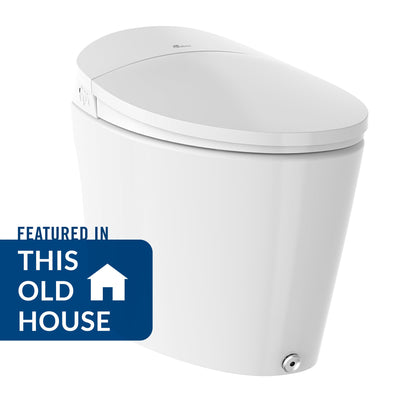How to Conserve Water at Home (Room-by-Room Tips!)

Water conservation at home reduces monthly utility bills and offers every household a chance to do their part in creating a more sustainable society. The good news is that there are many opportunities to reduce your average daily water use.
This can be accomplished by creating new habits and investing in faucets and other products that make conserving water more convenient.
How Much Water Does the Average Person Use Per Day?
Having immediate access to water is easy to take for granted. In the United States, we can fill up a glass of safe, treated tap water just by twisting a knob or lifting a lever. That level of convenience means Americans use a lot of water.
The average US household uses 300 gallons of water per day. 70% of that water usage occurs inside, usually in the kitchen, bathroom, and laundry room, with the additional 30% used outdoors for things like watering the grass and washing the family car.
How to Use Less Water in the Kitchen
Using less water in the kitchen is a great place to start creating new habits:
- Keep a water pitcher in the fridge. Did you know that waiting for cold water at your faucet can waste nearly three gallons of water per day? Instead, fill up a pitcher and store it in the fridge so that you always have cold water ready.
- Use a touchless faucet. Touchless faucets that turn on and off via a sensor offer considerable water savings. According to one study, touchless faucets can reduce water use between 60-80%.
- Use a dishwasher. When it comes to a dishwasher vs. handwashing for water usage a dishwasher, especially with a full load of dishes, uses a lot less water than washing by hand in the sink.
- Scrape plates. Instead of rinsing your plates before loading the dishwasher, try scraping larger amounts of food with your fork or spoon to use less water. If you scrape dishes right away, you do not need to pre-rinse your plates, bowls, or cutlery.
How to Use Less Water in the Bathroom
- Fix leaks. Toilet and shower leaks add up quickly. A single leaky valve or faucet can waste up to 20 gallons per day. Look for leaks or moisture around all seals and valves and address leaks quickly.
- Take a shower. Showers use much less water than baths. A full bathtub can use up to 50 gallons of water. A 5-minute shower uses roughly 10 gallons. If your child isn’t ready for showers, use small plastic or inflatable tub inserts to keep them safe and use less water than a full bath.
- Close the tap. Avoid leaving the faucet running while brushing your teeth or shaving. To shave, use a plug or stopper to fill just a bit of water in the sink for rinsing your razor instead of having to run the faucet repeatedly.
- Low-flow toilets. Using a low-flow toilet reduces the amount of water needed for every flush. Models like the Bio Bidet Discovery DLX Smart Bidet Toilet take water conservation a step further by using less water to flush liquid waste.
How to Use Less Water in the Laundry Room
- Efficient washing machines. Front-loading washing machines use roughly 6 fewer gallons per load compared to similarly-sized top-loading washers. These models can save about 1,800 gallons of water per year.
- Full load only. A full load of laundry is the most water-efficient way of doing laundry. Do full loads whenever possible and adjust the controls for each load to dial down the run time, soil level, and use of warm/hot water wherever it makes sense. Over-cleaning clothes is a waste of water and energy.
- Do less laundry. Wear lightly worn items more than once and consider only washing heavier outerwear like coats, jackets, snow pants, and scarves when truly soiled or smelly.
3 Big Reasons to Conserve Water
It can be hard to develop new habits, but homeowners should be motivated to adopt many of these changes.
That’s because the benefits of water conservation in your home are immediate ($) but also long-term:
- Lower utility bills. By using less water, homeowners save on their monthly water and energy bills.
- Lower carbon emissions. Since using less water means using less energy, that leads to lower carbon emissions.
- Reduced water scarcity. By 2025, roughly two-thirds of the world’s population will face water shortages. We all need to do our part to reduce water scarcity.
Do More to Live Sustainably with Bio Bidet by Bemis
FLOW touchless faucets are an excellent and effortless way to reduce water consumption at home. Learn more about our FLOW collection and while you’re at it, consider checking out how a little spray can go a long way when you opt for a bidet seat or bidet attachment to reduce your reliance on toilet paper.
Contact us today to learn more about the benefits of touchless faucets and be sure to sign up for our newsletter for exclusive discounts delivered right to your inbox.



